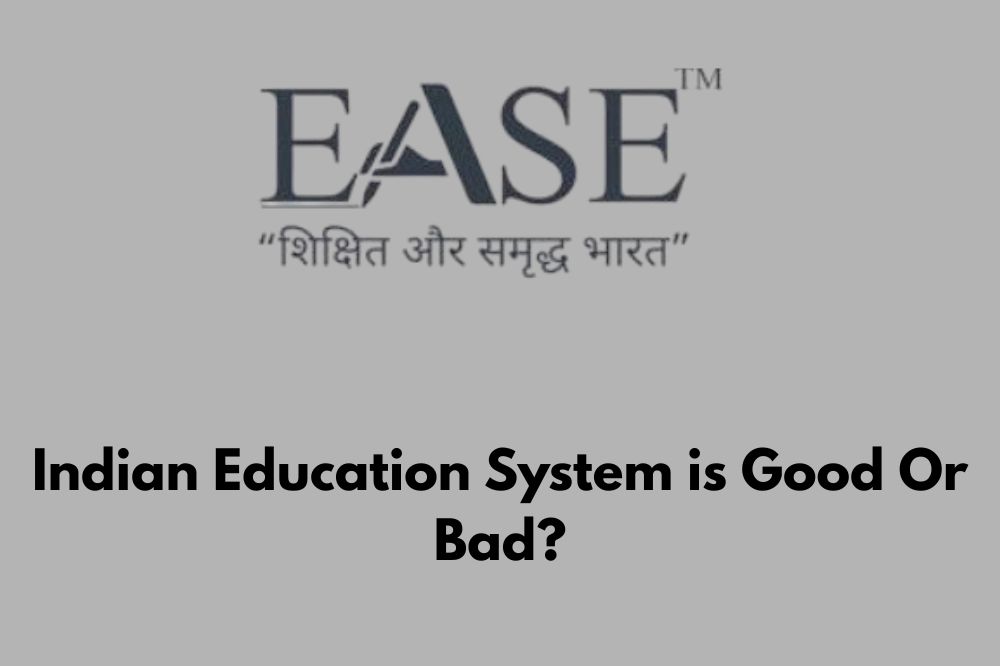The question “Indian education system is good or bad” is one of the most searched and debated topics among students, parents, and educators across India. With over 1.5 million schools and a legacy that spans ancient Gurukuls to modern digital classrooms, the Indian education system has both remarkable strengths and serious challenges. In this blog, EaseEdu—India’s trusted school growth partner—offers a detailed analysis to help you understand whether the Indian education system is truly serving today’s learners or needs urgent reform.
A Brief History of Indian Education
India’s education roots trace back to the Gurukul system, where learning was holistic, nature-based, and deeply personal. The British introduced a more formal, exam-driven structure in the 19th century, emphasizing English, math, and science. Post-independence, India expanded access to education through government schools, national boards, and higher education institutions.
Today, India has:
- Over 1.5 million schools
- More than 33,000 colleges
- Top-tier institutions like IITs, IIMs, and AIIMS
- A growing focus on digital learning and NEP 2020 reforms
Strengths of the Indian Education System
1. Global Academic Reputation Indian students consistently excel in STEM fields, winning global scholarships and placements in top universities.
2. Competitive Exams Build Rigor Exams like JEE, NEET, UPSC, and Olympiads push students to master subjects deeply and prepare for high-stakes careers.
3. Affordable Public Education Government schools and colleges offer low-cost education, making learning accessible to millions.
4. Diverse Curriculum Choices Students can choose between CBSE, ICSE, IB, and state boards, each with unique strengths.
5. Strong Teacher-Student Culture Respect for teachers and structured discipline still form the backbone of Indian classrooms.
Weaknesses of the Indian Education System
1. Rote Learning Over Critical Thinking Many schools still prioritize memorization over creativity, problem-solving, and real-world application.
2. Exam Pressure and Mental Health High competition leads to stress, anxiety, and burnout among students—especially in Classes 10 and 12.
3. Inequality in Access and Quality Urban schools often have better infrastructure and faculty than rural ones, creating a gap in learning outcomes.
4. Lack of Practical Skills Students graduate with theoretical knowledge but limited exposure to hands-on learning, internships, or life skills.
5. Limited Focus on Arts and Vocational Training Creative fields and vocational education are often sidelined, despite growing demand in modern careers.
Indian Education System is Good Or Bad?
The Indian education system is not inherently bad—but it needs urgent modernization. With reforms like NEP 2020, digital classrooms, and skill-based learning, the system is evolving. However, challenges like exam-centric culture, inequality, and outdated pedagogy still persist.
EaseEdu believes that school growth depends on innovation, inclusivity, and emotional intelligence—not just marks and ranks.
FAQs – Indian Education System is Good Or Bad?
Q1. Is the Indian education system outdated?
👉 In parts, yes. Many schools still follow old methods. But reforms like NEP 2020 aim to modernize learning.
Q2. Why is there so much exam pressure in India?
👉 Competitive exams decide college admissions and careers, making marks a high-stakes issue for students and families.
Q3. Are Indian students globally competitive?
👉 Absolutely. Indian students excel in STEM, coding, medicine, and research worldwide.
Q4. What are the biggest challenges in Indian schools?
👉 Rote learning, lack of infrastructure in rural areas, and limited focus on creativity and mental health.
Q5. How can schools improve under EaseEdu’s guidance?
👉 By adopting smart classrooms, teacher training, emotional wellness programs, and personalized learning strategies.
Final Thoughts from EaseEdu
India’s education system is a work in progress. It has produced brilliant minds—but also left many behind. As a school growth partner, EaseEdu supports institutions in building future-ready classrooms that nurture curiosity, confidence, and compassion.
Let’s move beyond marks. Let’s build minds.

